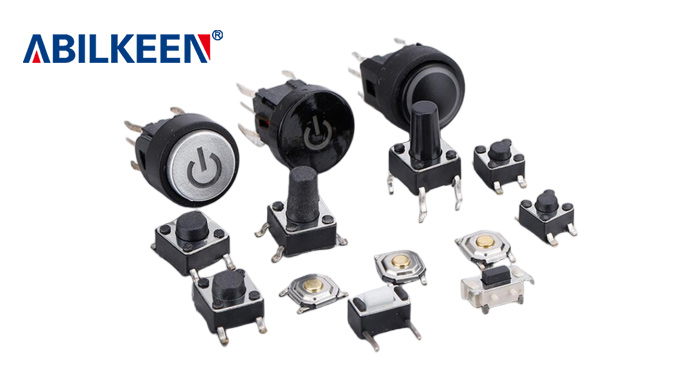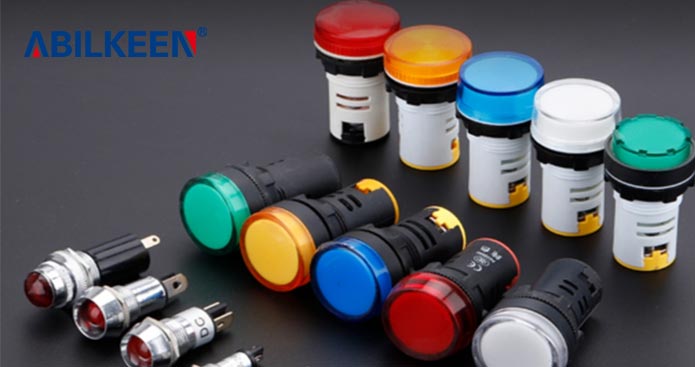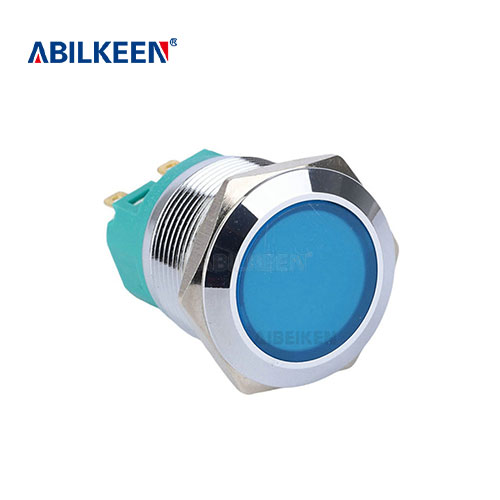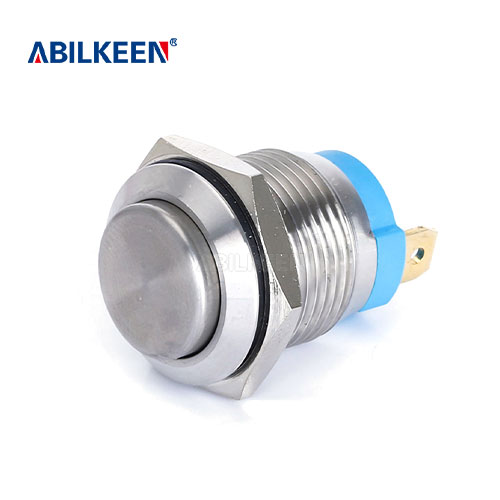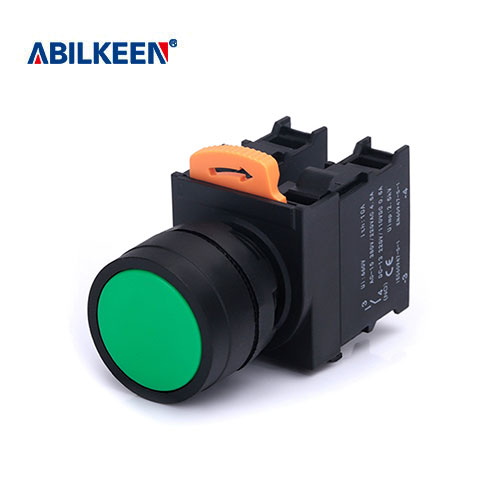What is an Anti-vandal Switch and what are its uses?

 By:Blazers
By:Blazers
In public spaces, industrial workshops, or outdoor environments, ordinary switches often fall victim to vandalism, accidental damage, or harsh weather—leading to frequent replacements, costly downtime, and safety risks. This is where the anti-vandal switch comes in: a rugged, durable switching solution designed to resist physical abuse, environmental erosion, and unauthorized tampering. Unlike standard toggle or push-button switches (which break easily under force or moisture), anti-vandal switches are built for high-stress scenarios, making them indispensable in settings where reliability and longevity matter most.
Below, we’ll break down what an anti-vandal switch is, its key features, and the wide range of industries and applications where it shines.
What is an Anti-vandal Switch? Core Definition & Key Features
An anti-vandal switch (also called a “vandal-resistant switch”) is a type of electrical switch engineered to withstand intentional damage (e.g., kicking, prying, or hitting), accidental impact, and extreme environmental conditions (dust, water, temperature fluctuations). Its design prioritizes durability, security, and low maintenance—addressing the flaws of regular switches that fail quickly in high-traffic or harsh environments.
To achieve “anti-vandal” performance, these switches include five non-negotiable features:
1 Rugged Housing: Resists Physical Impact & Tampering
The outer casing (housing) is the first line of defense, typically made from:
-
304/316 stainless steel: Thicker than regular switch casings (1-2mm vs. 0.5mm), it resists scratches, dents, and corrosion (critical for outdoor or humid spaces like swimming pools).
-
Reinforced plastic (e.g., polycarbonate): For lightweight applications (e.g., indoor kiosks), it’s impact-resistant (can withstand 10N of force without cracking—equivalent to a hard kick).
Most anti-vandal switches also have a flush-mount design (no protruding parts) to prevent prying with tools like screwdrivers. Some models add a “lockable” feature (requiring a key to operate) to stop unauthorized use (e.g., emergency stop buttons in factories).
2 High IP Protection Rating: Dust & Water Resistance
Unlike regular switches (often IP20, only dust-resistant), anti-vandal switches have IP65, IP67, or IP68 ratings—making them suitable for wet or dusty environments:
-
IP65: Fully dust-tight; resists low-pressure water jets (e.g., rain, sprinklers) from any direction. Ideal for outdoor ticket machines or parking lot payment terminals.
-
IP67: Dust-tight; can be submerged in 1m of water for 30 minutes. Perfect for swimming pool control panels or marine equipment.
-
IP68: Dust-tight; submersible in deep water (up to 10m). Used in underwater sensors or offshore industrial gear.
This protection ensures the switch won’t short-circuit or rust, even in harsh conditions.
3 Heavy-Duty Actuator: Withstands Repeated Use & Abuse
The “button” or lever you press (actuator) is built to handle thousands of cycles without breaking:
-
Metal actuators (stainless steel, aluminum): Resist bending or cracking—even if someone steps on them (e.g., floor-mounted emergency switches in warehouses).
-
Long lifespan: Most anti-vandal switches support 100,000-1,000,000 operations (vs. 10,000-50,000 for regular switches). A public restroom’s anti-vandal flush switch, for example, can last 5+ years with daily use.
Key Uses of Anti-vandal Switches: Industry-by-Industry Applications
Anti-vandal switches aren’t just “tough”—they’re tailored to solve specific problems in diverse industries. Below are their most common use cases, with real-world examples:
1 Public Facilities & Transportation
Public spaces see constant foot traffic and occasional vandalism—anti-vandal switches are the only choice here:
-
Public restrooms: Flush buttons, soap dispenser triggers, or hand dryer switches. Stainless steel IP65 models resist water splashes and prevent damage from kicking or prizing.
-
Transportation hubs: Train station ticket machines, airport check-in kiosks, or bus stop information panels. IP65 switches withstand rain, dust, and accidental impacts from luggage.
-
Parking lots: Payment terminal buttons or barrier gate controls. Flush-mount designs prevent tampering (e.g., people trying to force the gate open with tools).
-
Stadiums/arenas: Concession stand payment switches or emergency exit pushbars. Heavy-duty actuators handle hundreds of uses per game.
2 Industrial & Manufacturing: Withstand Vibration & Harsh Conditions
Factories, warehouses, and industrial sites expose switches to vibration, dust, oil, and extreme temperatures—anti-vandal switches thrive here:
-
Machine control panels: Start/stop buttons for assembly lines, or emergency stop (E-stop) switches. Vibration-resistant connections prevent unexpected shutdowns, while IP65 ratings keep out oil and metal dust.
-
Warehouses: Floor-mounted switches for conveyor belts (workers can press them with their feet) or loading dock door controls. Metal actuators resist being crushed by pallets.
-
Mining/Oil & Gas: Underground mining equipment or offshore rig control panels. IP68 anti-vandal switches withstand dust, water, and corrosive chemicals (e.g., oil spills).
-
Food Processing: Clean-in-place (CIP) machinery switches. IP67 models resist high-pressure water jets used for sanitization, and stainless steel housing won’t rust from cleaning chemicals.
3 Outdoor & Environmental Equipment: Beat the Elements
Outdoor devices need switches that handle rain, snow, heat, and dust—anti-vandal switches are built for this:
-
Solar Energy Systems: Inverter control buttons or battery bank switches. IP65 ratings resist rain and dust, while wide temperature ranges (-40°C to 85°C) handle desert heat and winter cold.
-
Landscaping & Agriculture: Irrigation system controls or greenhouse vent switches. IP67 models survive being sprayed with water hoses, and corrosion-resistant housing stands up to fertilizer chemicals.
-
Outdoor Lighting: Streetlight on/off switches or parking lot light controls. Flush-mount designs prevent tampering, and IP65 ratings keep out rain and dirt.
-
Marine Equipment: Boat dash switches (e.g., navigation lights, bilge pumps). IP67 or IP68 models resist saltwater corrosion and submersion (if the boat takes on water).
3. How to Choose the Right Anti-vandal Switch for Your Needs
Not all anti-vandal switches are the same—follow these steps to pick the right one:
Step 1: Match the IP Rating to the Environment
-
Indoor, dry (e.g., office security kiosks): IP65.
-
Indoor, wet (e.g., restrooms, labs): IP67.
-
Outdoor or submerged (e.g., marine equipment, pools): IP68.
Step 2: Choose the Right Actuator Type & Material
-
Push-button: Most common (e.g., flush buttons for restrooms).
-
Toggle/rocker: For on/off controls (e.g., machine start switches).
-
Rotary: For adjusting settings (e.g., volume on outdoor speakers).
-
Material: Stainless steel for maximum durability; plastic for lightweight, low-cost needs.
Step 3: Check the Electrical Specifications
-
Voltage/current: Ensure the switch handles your device’s power (e.g., 12V DC for electronics, 240V AC for industrial machinery).
-
Contact type: Normally Open (NO) or Normally Closed (NC)—match to your circuit (e.g., E-stop switches are usually NC, so they cut power when pressed).
Step 4: Consider Mounting Style
-
Panel-mount: Fits into a hole in a control panel (most common).
-
Surface-mount: Attaches to the outside of a device (e.g., outdoor lighting switches).
-
Floor-mount: For foot-operated use (e.g., warehouse conveyor switches).
Step 5: Add Extra Features if Needed
-
LED indicators: Show if the switch is on/off (useful for low-light areas like parking garages).
-
Lockable design: Prevent unauthorized use (e.g., industrial machine controls).
-
Tamper-proof screws: Stop someone from removing the switch (e.g., public kiosks).
Conclusion
Anti-vandal switches solve a critical problem: regular switches fail too quickly in high-stress, high-traffic, or harsh environments. By combining rugged housing, weather resistance, and long lifespan, they reduce maintenance costs, minimize downtime, and improve safety—making them essential for public facilities, industrial sites, outdoor equipment, and more.
Whether you’re upgrading a public restroom’s flush buttons, building a factory control panel, or installing outdoor solar equipment, choosing the right anti-vandal switch ensures your device works reliably for years. If you’re unsure which model fits your needs—from IP65 panel-mount buttons to IP68 underwater switches—contact us. We’ll help you select a solution that matches your environment, budget, and performance requirements.


